Feed Me: "When I’m producing I’m always trying to hide the process so you just hear the result"
EDM producer Jon Gooch has revived his cartoonish Feed Me moniker. He showed Danny Turner around his studio and talked through how live instrumentation changed his production approach
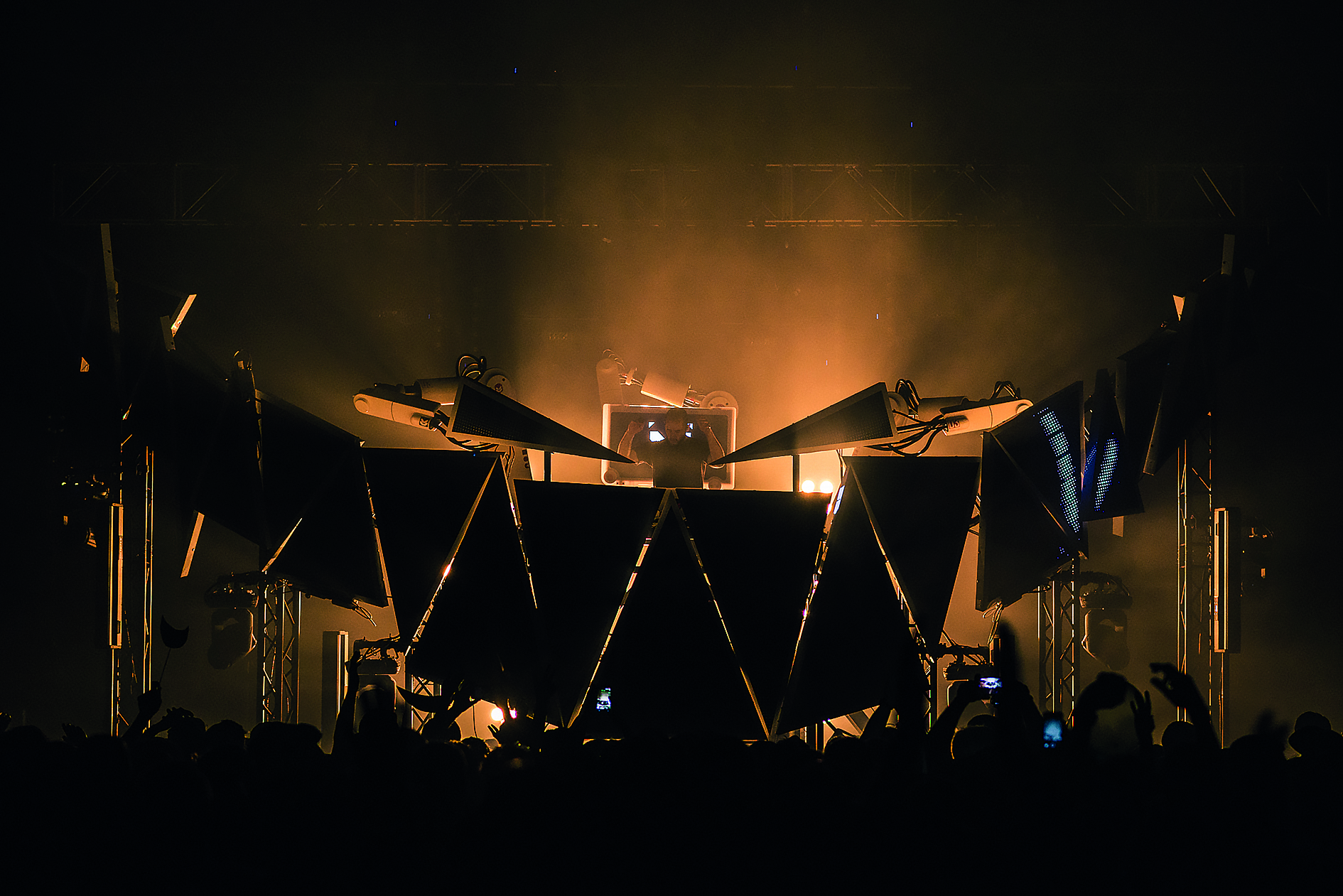
Debuting in 2008 as the first peripheral artist to feature on Deadmau5’s mau5trap label, Jon Gooch (aka Feed Me) exploded onto Beatport with his unique brand of bass-heavy electronica before creating his own Sotto Voce label to garner full creative control.
As a former multimedia designer, Gooch has become synonymous with his green Feed Me monster character, infusing its fictitious narrative into his music and infamous ‘With Teeth’ live productions.
Alongside his drum & bass stage name, Spor, Gooch is known for his eclecticism and cutting-edge approach to sound design. On his latest, self-titled, Feed Me album, the producer decided to switch up his creative process.
Alternating between his live instrumentation and programming skills, the record showcases Gooch’s audacious production skills and high-octane brand of anthemic bass and electro.
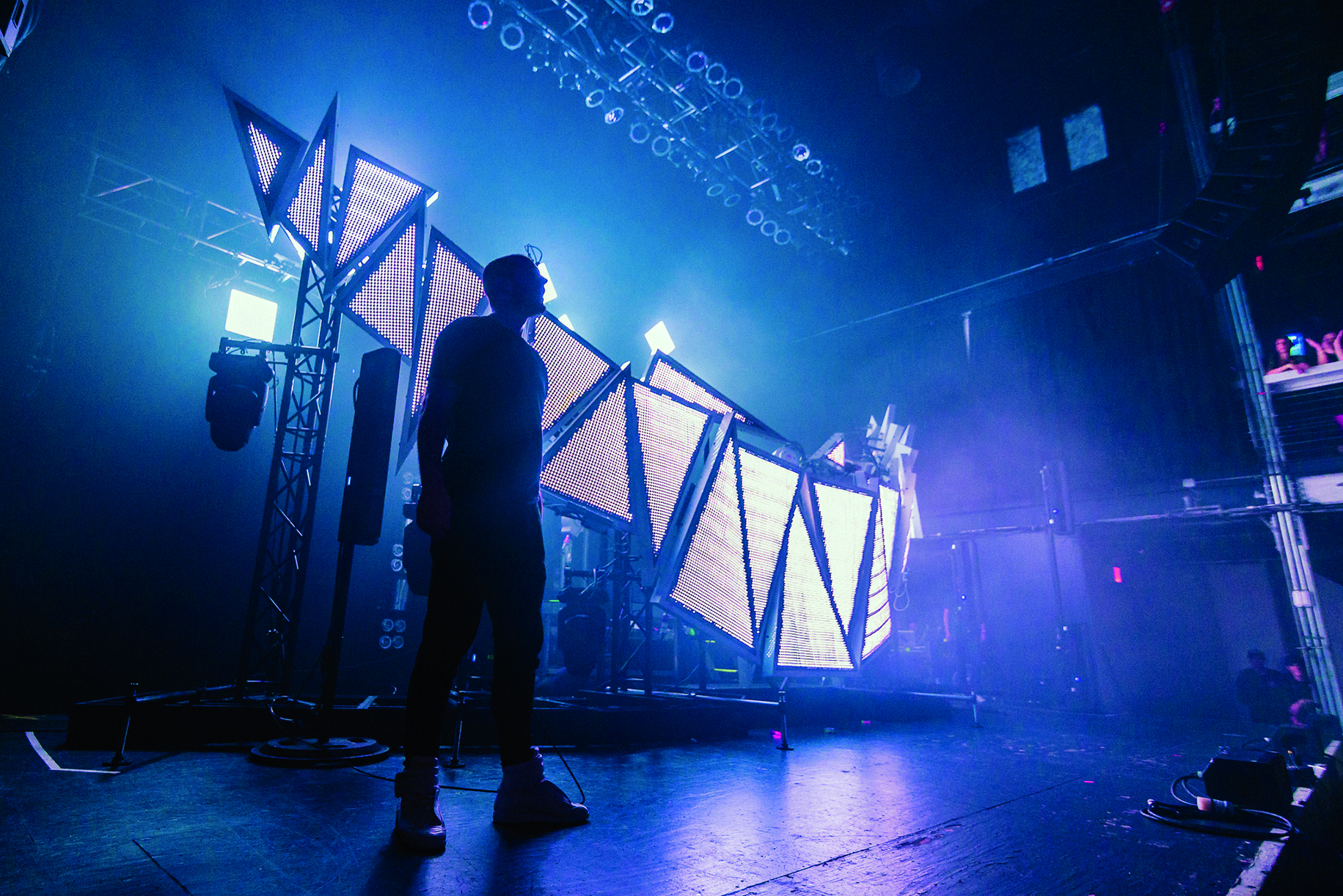
You’ve mentioned how you differentiate between EPs and albums, comparing them to magazines and novels. How does the latest Feed Me album play into that?
“I grew up listening to prog rock albums that had distinct story arcs and wasn’t exposed to pop music until I was a bit older so, to me, an album was something you’d put on and listen to in its entirety.
"I like the idea of an album being a journey and try to consider a screenplay element when I’m writing. There’s been an aesthetic to each one and I started Feed Me as a figurative idea, with the character not referencing food but being consumptive.”
Want all the hottest music and gear news, reviews, deals, features and more, direct to your inbox? Sign up here.
So there’s an ideological component to the Feed Me character?
“I turned Feed Me into a character to turn the attention away from me because I didn’t want to be in the artwork, but it’s definitely a fantasy – a way of expressing my more mischievous and energetic side without having to be the central ego of the project.
I’ll often bounce to tape and delete the file so I have no choice but to continue with what I’ve got
"With this album I wanted to take the character back to the abstract and consign a colour palette that joined the sketches I’d made in the studio. I was also trying to work out how little information I could put in an image while still being able to tell it was the Feed Me character.”
Aligned to that, how do you think the music has evolved on this latest release?
“With the benefit of hindsight, the last two albums were a collation of ideas that I wrote on the road, off the road and all over the world. They’re like a scrappy diary of sounds and ideas. I was pleased with the end result, but pulling them together was like trying to fit too many clothes into a suitcase.
"Coming into a third album, I wanted to change how I approached making a record from the ground up, so rather than using emulated sounds I went straight to the original source. I’ve realised I’m no longer obsessed with fidelity or ever-improving a sound.
"The experience of making it has become just as interesting to me, so I brought in a lot of analogue media, expanded my modular setup and went out and bought a couple of guitars that I particularly wanted to use. Ultimately, I wanted to try and create shorter distances between the sounds I imagined and what I ended up with.”
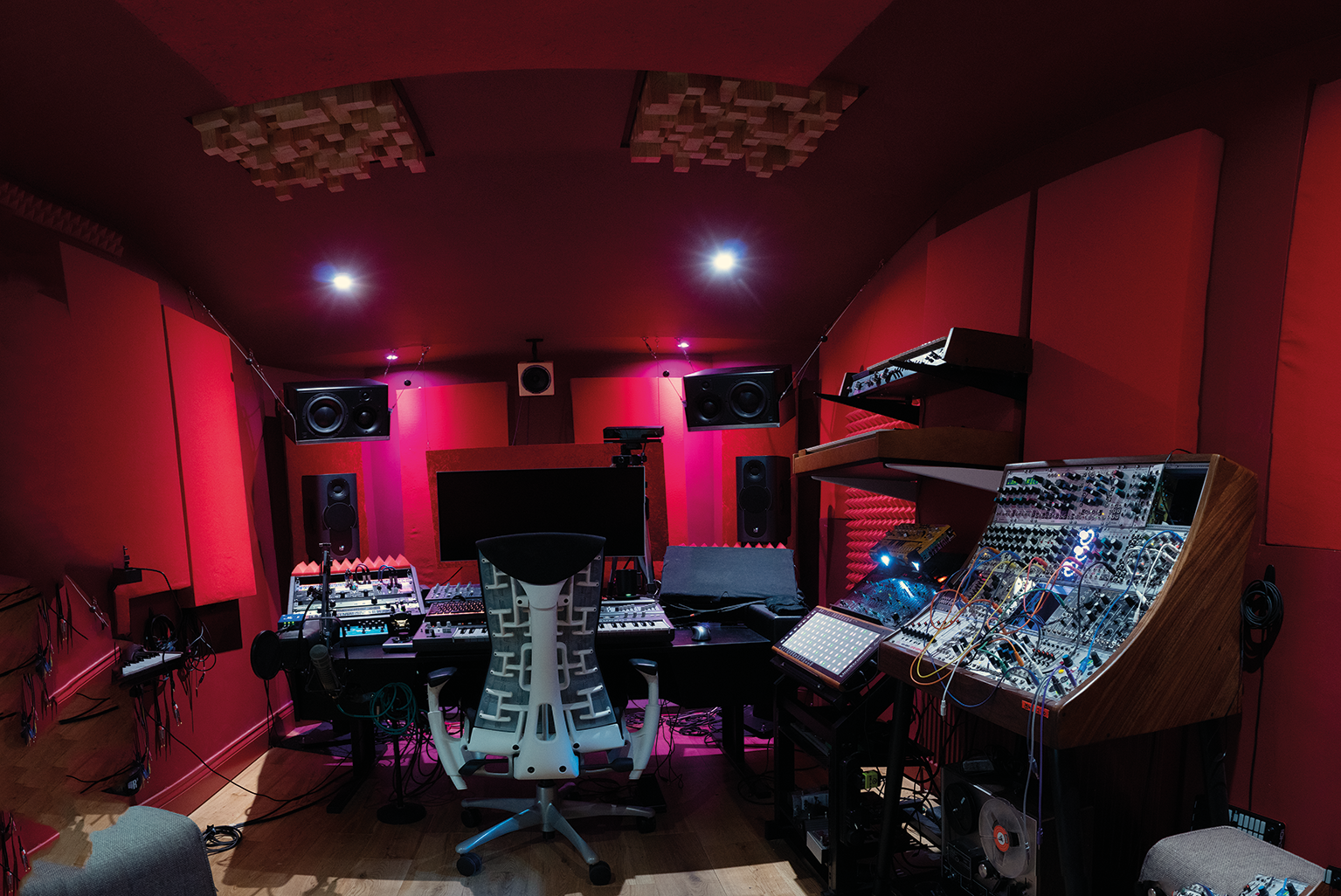
Has software become a dead end for you?
“I certainly think there’s a little bit of repackaging going on and it’s very difficult for current software to move much further than it’s gone because you’re still a person at a screen with a mouse and a MIDI input.
"The experience is limited by that interface unless you start talking about people making things in virtual reality, but that’s still a bit esoteric and novelty. Plenty of people say they want to get away from a screen, pick up a box, go somewhere and create music in a different environment.
"Varying the experience is part of keeping things fresh and interesting and can be far more useful than updating a soft synth.”
We read that you’re motivated by balancing analogue and digital domains…
“I’ve always worked between the two. I grew up painting and drawing but also learning Photoshop. I took photos on film, but now I use film and digital cameras, and I played in an orchestra when I was young and now I’m using soft synths. I just thought I should include more of that tennis match between digital and analogue right from the beginning.”
When I’m producing I’m always trying to hide the process so you just hear the result
Squarepusher is an influence of yours who also balances his digital side. For example, by implementing electric bass…
“Yeah, and I don’t know how he plays bass like that either – it almost sounds impossible for it to be physical, but it’s based on a lifelong dedication to the art. To me, Squarepusher sits closer to drum & bass, and when I was making that stuff he was the person I was listening to most because the music had a lot of classic rave breaks and sub sine wave basslines.
"It was much more abstract too and I liked how jazzy he was. Feed Me is a lot more 4/4-oriented – I imagine it as a rock, funk and psychedelic band, except I’m the whole band.”

Would Squarepusher be an artist you analysed to pick up production techniques?
“I’ve done tutorials in the past but decided I never want to do them again because not knowing how something is made is always more interesting than finding out.
"When I first heard Kid A or even Music for the Jilted Generation, I sat there in wonder but had no exposure to a synthesiser or sequencer and just wondered where the sounds could possibly be coming from."
"The years I spent thinking that way were far more influential than when I actually got my hands on the gear because imagining where a sound might have come from gives it life in your mind.
"When I’m producing I’m always trying to hide the process so you just hear the result and don’t get to pick apart every detail and turn it into a tutorial in your mind.”
You’ve mentioned your music representing creation and destruction. Does that have a wider philosophical meaning?
“It’s not political but it’s definitely a commentary on how we interact with media, people’s attention spans and the speed at which we’re willing to interface with an idea. I’ve always enjoyed art that doesn’t last.
"With visual media, you’re making something that’s often permanent but with audio you’re stealing someone’s attention for a brief moment in time. On the new album, I do a lot of one-performance takes where I didn’t keep the MIDI and I like the idea of the original idea being gone.
"I’ll often bounce to tape and delete the file so I have no choice but to continue with what I’ve got.”
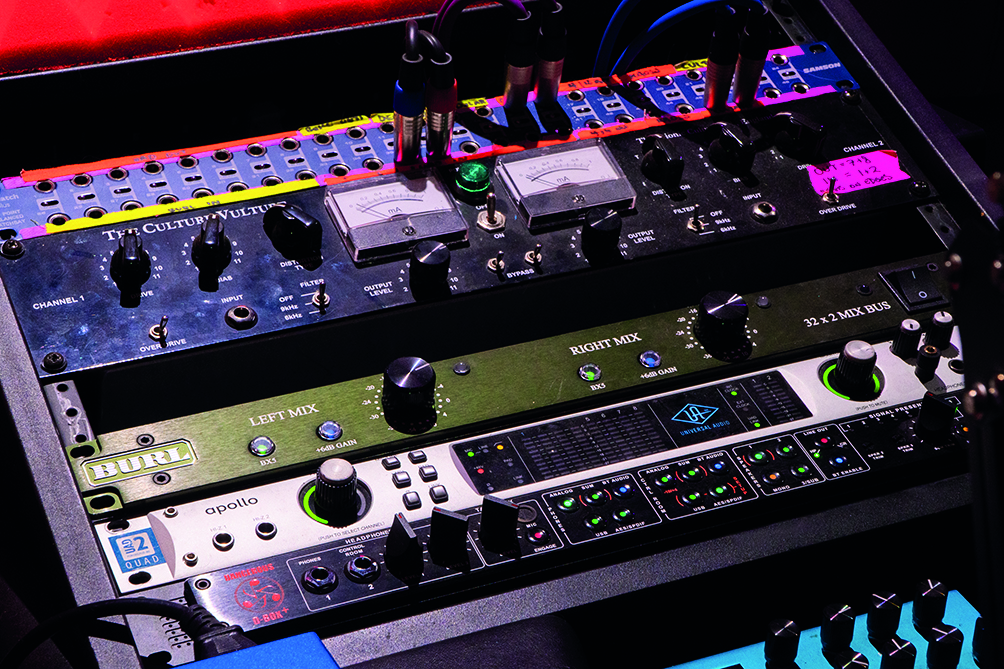
Did you introduce that way of working to stop yourself over-obsessing?
“Perhaps, or maybe it’s just exciting to me. There’s an artist called Andy Goldsworthy who only works with natural materials. He’ll go into a forest and create an enormous sculpture from icicles he’s pulled off trees.
"The result is documented in a photograph but subsequent images show the art melting or falling to pieces, and that’s often just as interesting as the original, so I enjoy both directions of creation/destruction.
"There is an element of forcing forward momentum because you can’t constantly keep refining something, especially as there are so few limitations now in terms of how many files you can save or how much data you can collate.
"The tendency is to limitlessly horde ideas, but I wonder how many of those ideas would be improved by being irrecoverably printed and people having to work on them with no option to go back and tweak version 20. So, yeah, limitations do stop you overcooking.”
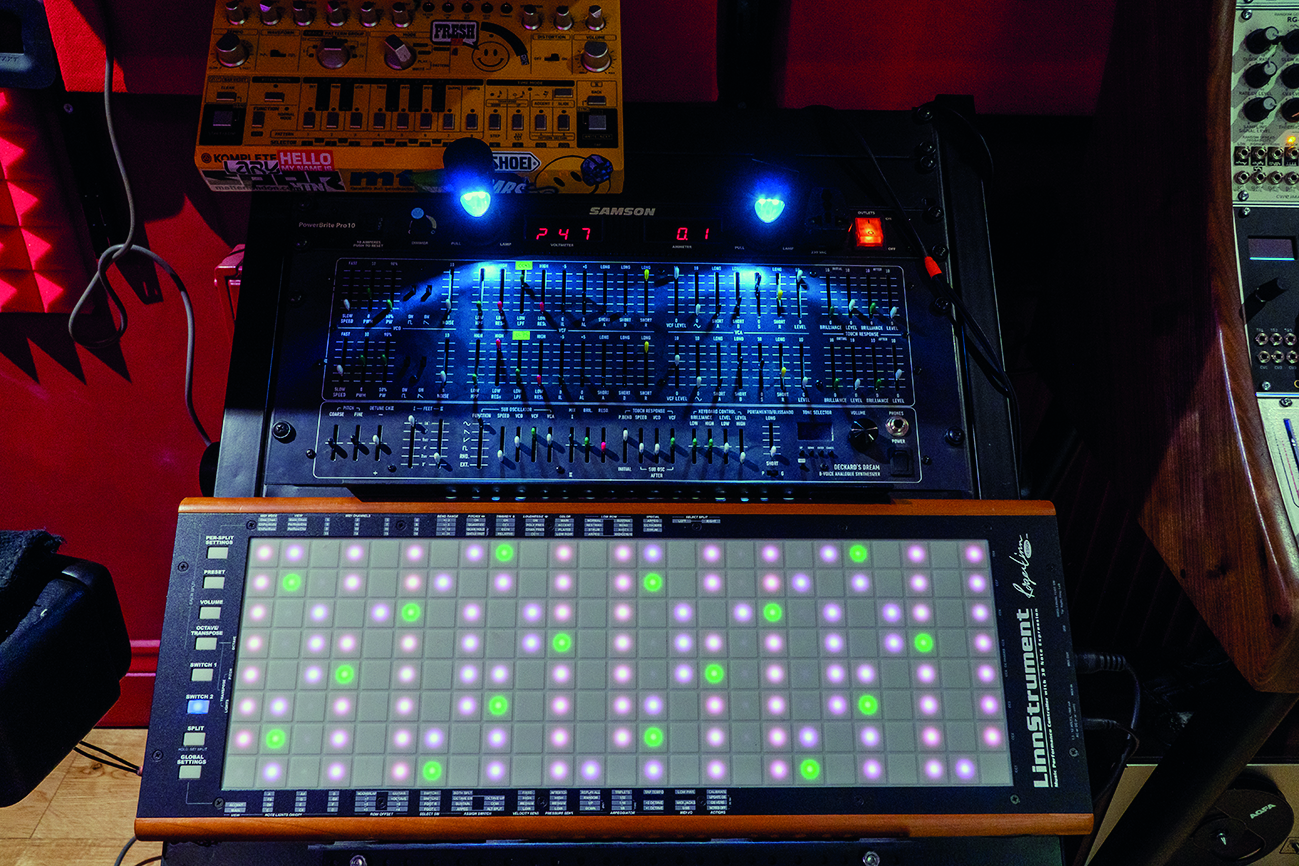
How do you know when a track is finished?
“This album was the first time that I didn’t need to second guess myself because I knew exactly when it was done.
"I knew the sound I wanted and grabbed that from one or two of the tracks early on, using them as reference points to pull the others towards. I’ll probably hang on to that memory for a bit because I don’t know if it’ll happen again [laughs].”
You’ve always mastered your own material, which indicates a very strong confidence in your production skills…
“I’ve mastered everything I’ve released since 2005. I do work on and off with Stuart Hawkes at Metropolis for vinyl but used to attend all the cutting sessions for the Renegade Hardware label back in the day.
You could say I have a Jim Henson approach to dance music
"I’d incessantly ask questions, but in terms of how you think about mastering the learning process is something you never finish.
"I’m sure I’d get labelled a control freak by some of the people who have worked with me, but I feel that how my music sounds and how it’s presented is just as much part of its character as the melodies I’m writing or the sounds I’m using.
"I like to have that control and need to make sure that’s not erased because someone has a different vision of how everything might fit.”
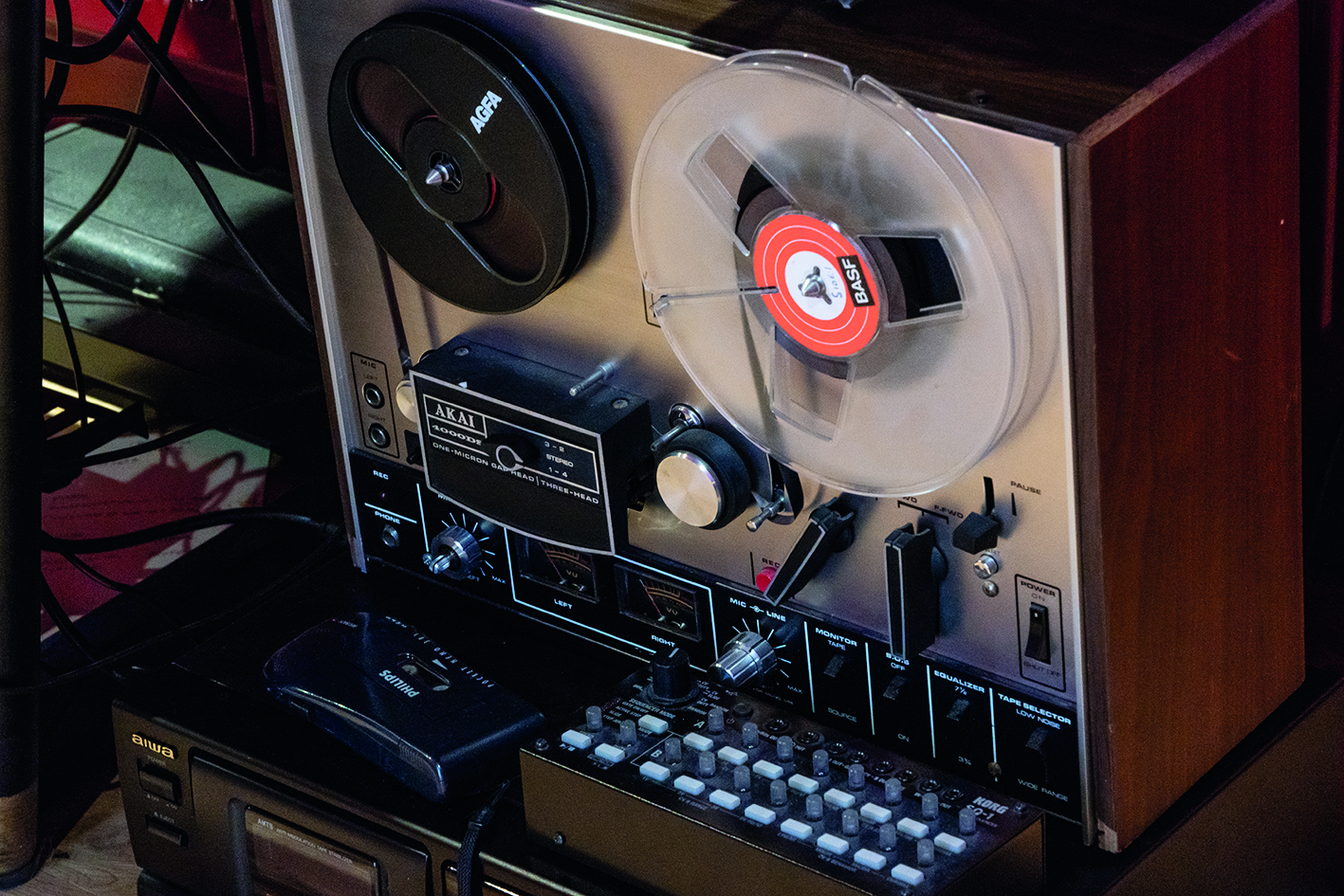
The album track Frank Frazetta introduces a new Feed Me character to your armoury?
“Frank Frazetta was a prolific fantasy/sci-fi painter who created a lot of famous book covers and influenced most modern film poster compositions. I walk past a bunch of his books every morning and started repeating the name until it became an onomatopoeia-type rhythmic sound in my head that formed a beat.
"I recorded that, started having fun with it and then I thought it would be interesting to conduct a social experiment by calling people I knew and asking them to record themselves saying ‘Frank Frazetta’.
"I eventually amassed a collection of confused responses from people all over the world that I’d coaxed into doing this for me – so thank you to those people.”
Do your tracks initially sound relatively conventional compared to how they end up?
“I like to write from stuff that I can play, so I’ll sit and play the piano, guitar or bass and try not to worry too much about the engineering side at that point.
"It’s like a jam session basically, and then part of the fun with Feed Me is taking those ideas and turning them into something gigantic, like a caricature of what I initially played until it sounds stomping, comedic and inflated. You could say I have a Jim Henson approach to dance music.”
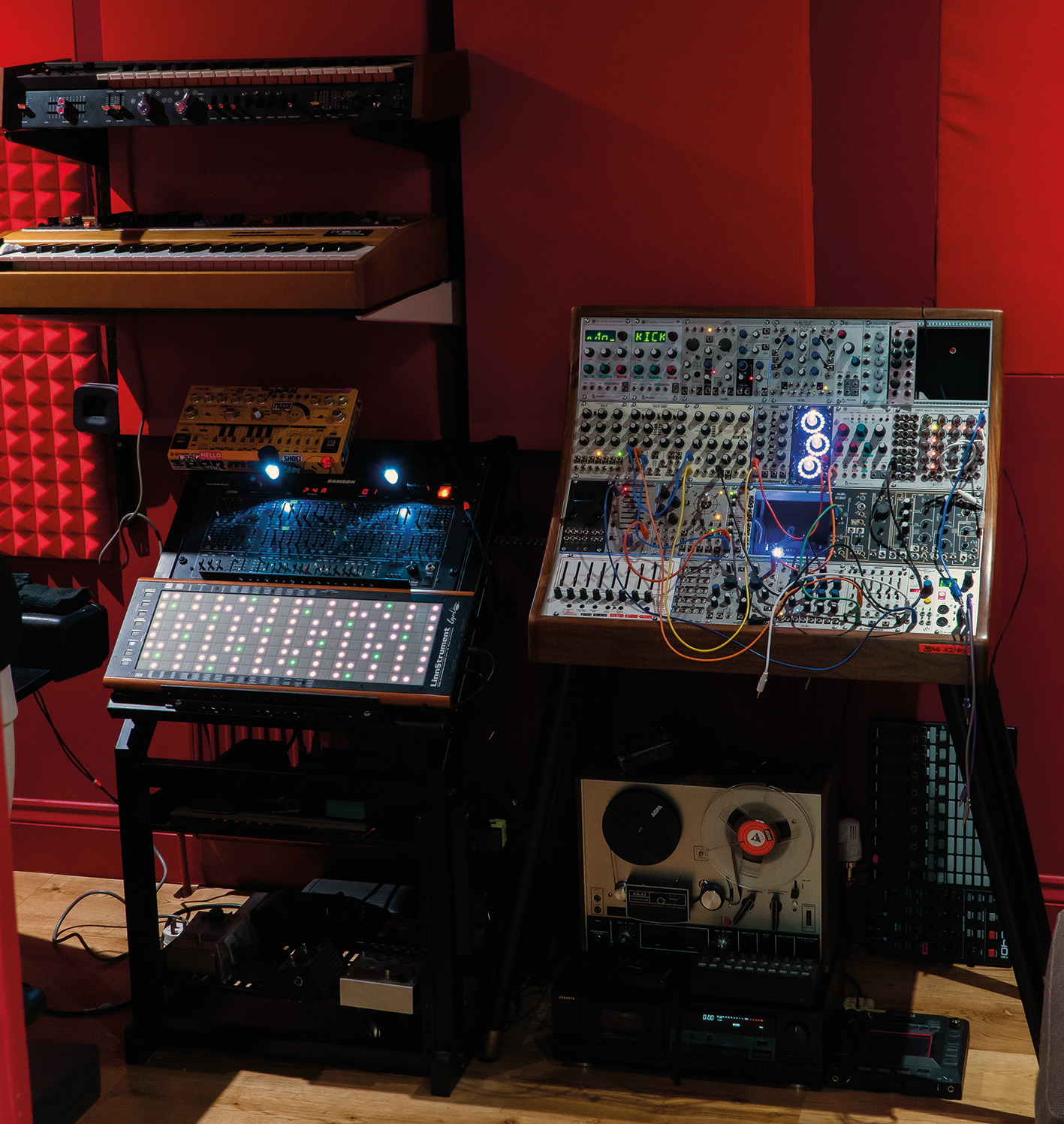
Did you have experience with live instruments?
“I taught myself guitar and piano and played flute in an orchestra for seven years. I can’t remember what level I got to because I hated it. I’ve always had a load of guitars, I’m alright at bass and I bought a bunch of drums off eBay and set up a few mics and an echo room in the house to give me an overhead layer.
"I grew up listening to Queen and love Brian May’s guitar tone, so the first thing I did on this record was get a Red Special and replicate his pedal line. Obviously, I can’t play like Brian, but having that sound live in the room was a better starting point than trying to tweak a Fender to sound like him.”
Do you also prefer to play a MIDI keyboard rather than rely on a mouse?
“I did have a big grand piano weighted MIDI interface, which I slowly beat to pieces, but then I got a UDO Super 6 analogue-hybrid synth, which is responsible for a lot of the super saw sounds on the album.
"When it comes to playing, there are certain superfast trills and arpeggios that are beyond my abilities, so there’s a lot of correction going on, but if things are off yet sound right, they’ll stay like that.”
Are you processing instruments between various analogue interfaces and the computer?
“It goes back and forth, but for this album everything came out of the computer and back in again even if that made things harder for me because I wanted to see how far I could take that concept."
With the Linnstrument I can bend multiple notes in multiple directions at the same time, which is great for creating cinematic sounds
"It’s more exciting for me when I have to find solutions to problems and, as mentioned, it stopped me worrying about fidelity because that whole process makes the sound more impressionistic.
"For example, I used a lot of natural tape wobble and my tape machines are not regularly serviced, so I was looking for that non-uniformity.”
Do you tend to use sidechaining as a compression technique or more creatively?
“I’ve always been interested in psychoacoustics so there’s been an enormous amount of sidechaining throughout my discography and I love how it sounds. With sidechaining, you’re basically falsifying the mechanics of someone’s ear when things are too loud because one sound is pushing the other out of the way.
"That happens when you’re exposed to very loud noise or even if you’re near a speaker that’s oscillating a low frequency because it ends up gating the conversation of others in a room.
"I was at a gallery exhibition in London yesterday that just did that – you walked into a room with a few subs and they played a microtonal sine wave that was slightly out of sync and slowly allowed the conversation of everyone in the room to fade in and out because your ears were occupying the tone.
"That interests me because I like the exaggerated sound and there’s obviously an engineering benefit to it. On this album, I did some bussing where rather than automating the sidechain I did it by over-gaining and driving things together through a Culture Vulture, which is one of my favourite tools.”
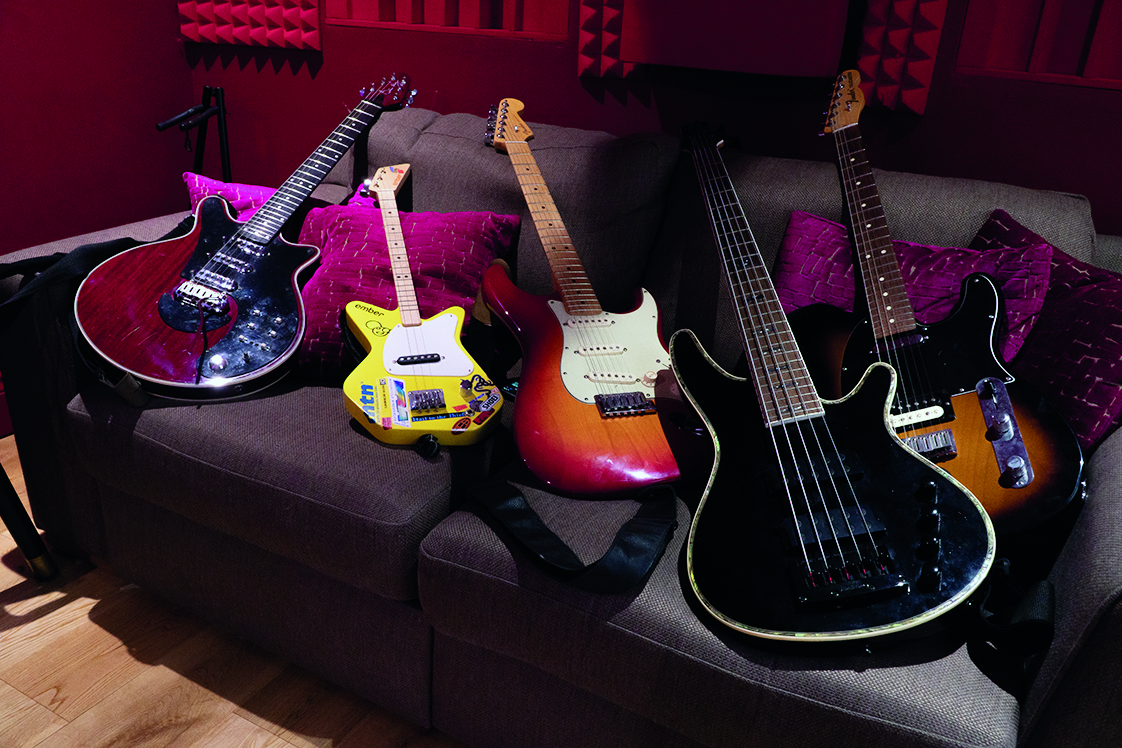
Along with the acoustic instruments you’ve been playing, what hardware synths have you’ve been using lately?
“I love the Deckard’s Dream because it’s such a tactile instrument. I’ve got it in a rack with a thing called a Linnstrument, which is a polyphonic, touch-sensitive play surface.
"The touch response on the Yamaha CS-80 is one of its unique faculties so it seemed pointless to have the Deckard’s Dream and not be able to play it the same way.
"With the Linnstrument I can bend multiple notes in multiple directions at the same time, which is great for creating cinematic sounds and its after-touch and polyphony are things you can’t do with soft synths because of the limitations of MIDI as a format. For me, that’s reason alone to purchase gear.”
Is the Linnstrument similar to the MPE-focused ROLI Seaboard?
“I don’t like the Seaboard at all. It clings too closely to a piano layout, which only seems to hinder how you use it.
"The Linnstrument is laid out much more like a guitar and you can edit how it’s displayed by moving the interval spacing, which is a bit like re-tuning a guitar. I just find the Linnstrument’s a lot more intuitive – sorry Seaboard.”
The Lyra-8 is so weird that it’s impossible to use in a conventional way and I can never get it to do the same thing twice
Do you have any other analogue synths?
“I bought a MiniKorg 700S off a guy who bought it from Hawkwind in the ’80s, so it’s got a pretty cool psychedelic history. I used it on a bunch of tracks for lead lines and because it’s obviously not MIDI I just went for it and played all the takes in.
"It’s an eccentric object because it came out at a time when they had to make synths look like organs in order to sell them. It’s in incredible condition too – when I went to pick it up the guy’s whole family came down to watch it go.”
What’s the weirdest instrument you have?
“There’s a track on the album called Cost A Fiver Had A Tenner and most of the basslines were produced from unedited loops that came out of the Soma Laboratory Lyra-8. The synth is so weird that it’s impossible to use in a conventional way and I can never get it to do the same thing twice. ”
Are you a gear hoarder?
“Almost nothing in my studio is new. I buy a lot of second-hand stuff and don’t mind driving a couple of hundred miles to get hold of something. I like to keep things moving, so if a piece of gear no longer fits my workflow I’ll get it up on eBay, but I’ve got no problem repairing things either.”
You mentioned using a reel-to-reel, presumably to add some colouration to the sound?
“I loved listening to tapes when I was a kid and used to walk around with toy microphones and record stuff onto them, so that format’s still close to my heart.
"Cassettes were buried due to CDs, which were marketed as the new wave technology at the time, but I definitely have an inherent attraction to how tape works and what it does to sound.
"I’ve got a Tascam Portastudio 414, which adds a little less hi-fidelity but in a pleasing way. It’s got a pitch control, which adds a nice bit of wobble and the EQs are lovely. I also use it to reverse a lot of sounds and record myself backwards and I’ve collaborated with Bandcamp to release the album on tape too.”
From your knowledge, are cassette players in short supply these days?
“They stopped making good ones a long time ago, so if you want to buy a new tape player now they almost all have the same Chinese mass-manufactured mechanisms inside, which tends to be as cheap and light as possible.
"If you want nice tape players you’ve got to go back and get an old tape deck, but there are plenty available. It’s the same with record players I suppose; an older one is much more likely to be heavier and sturdier.”
What’s your opinion on the music industry revisiting analogue playback devices?
“There are a lot of downsides to the rise of Spotify and streaming media, but one of the upsides recently is that the playback level is auto-adjusted and normalised from their end, so the loudness war of a few years ago is starting to become a little more irrelevant. That encourages people to get more dynamic again and worry less about the fidelity aspect.
"The person who made the Lyra-8 also made something called the Ether, which is an open-ended radio receiver with a recorder in it that you plug headphones into, so you can walk around touching it on things and it picks up random radio signals from machines, air conditioning units, broadcast police, or anything.
"Those things definitely seem to retain an inspiring, tactile sensation that seems important to people.”
Are you still using FL Studio?
“Everyone asks this [laughs]. Cubase and Reason were around way before FL Studio but I still love it. It set a really high bar in terms of how frequently they update it and it’s got a nice mixture of intuitive workflow and eccentric tools.
"I’ve done collaborations in pretty much every DAW and do quite a lot of programming in Max for another project of mine, but always come back to FL Studio.”
Your Spor album Caligo was released as a Bit Torrent ‘pay what you want’ experiment. Was that a success?
“As someone who started out in drum & bass, there was always a massive contingent who would never pay for music and always tried to steal it off your mate or get MP3s prior to release, so I thought that rather than sit on forums and complain I’d embrace it.
"We were in talks with the primary Bit Torrent client at the time, so we let people go on the site and pay for the album if they wanted to and ended up averaging about the same price donated as if they had bought it anyway.
"It’s interesting to talk about the value of music and art and how we exchange it, and that’s probably happening all over again now with the NFT conversation.”


Future Music is the number one magazine for today's producers. Packed with technique and technology we'll help you make great new music. All-access artist interviews, in-depth gear reviews, essential production tutorials and much more. Every marvellous monthly edition features reliable reviews of the latest and greatest hardware and software technology and techniques, unparalleled advice, in-depth interviews, sensational free samples and so much more to improve the experience and outcome of your music-making.
